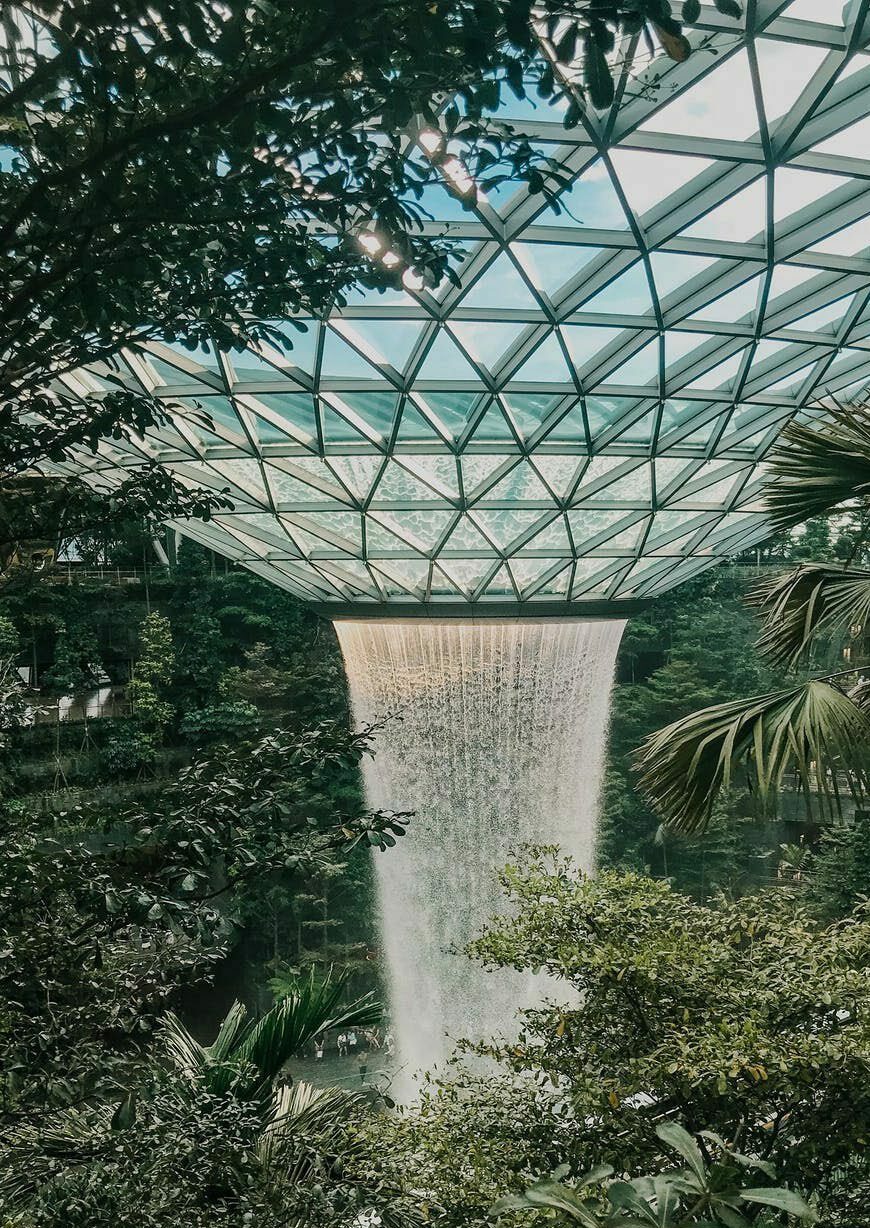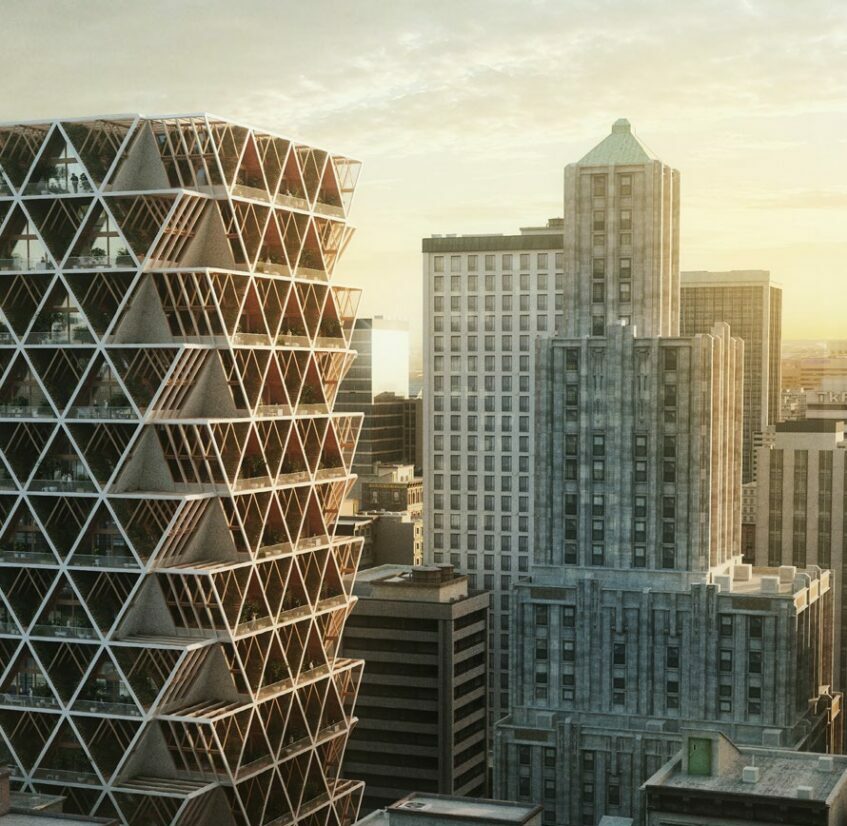The Way Forward: An Isotropic Radiation Of Ideas And Proposals
Paper on life affirming potentials of vertical farming written by Prof. Dickson Despommier and Dr. Daniel Podmirseg
The Farmhouse, Rendering. ©2018 courtesy of Penda and Chris Precht
Bosco Verticale, Milano, Italy. ©2019 Polina Chistyakova, https://www.pexels.com
Hyperbuilding, physical model. Prof. Brian Cody, Daniel Podmirseg, Sebastian Sautter et al. ©2014-2015 Institute for Buildings and Energy, Graz University of Technology
Vertical Farm Ruthner Turm, 1974 © 2016 Daniel Podmirseg
“It‘s a hell of an exciting time we live in. There‘s so much to do. Every challenge can lead us to great opportunities. The keys are: Design. Confidence. Energy.”
The upcoming weeks and months, supported by recommendations from scientists to narrow down the effects from the new COVID-19 virus, should be used to understand how much potential there is to really become part of a critical mass which wants to contribute to make the city of the future a more resilient, a more culture -based and - most of all - a more life-affirming environment. Based on the current rate of global urbanization, by the year 2050 cities will harbour nearly 70 percent of humanity. That translates roughly to 6.8 billion urban dwellers. For nearly 90 percent of our existence, we were apparently content to wander about, seeking refuge in temporary shelters, hunting game animals, and harvesting wild fruits, grains and nuts. This all changed around 10,000 years ago when we invented farming. Thereafter, agriculture of many types rapidly spread across the globe, affording us the luxury of not having to hunt and gather for a living. Cities soon rose up adjacent to farmland. Animal husbandry gained in popularity much earlier that the first farms but became part of the agricultural landscape when the cultivation of crops arose. Together, these two activities held the promise of providing human populations with a sustainable food supply and an animal labour force to make it work. Whole civili- zations evolved from these early days of food security.
But as we steadily progressed into the modern era, urban cultures exploded into an astounding number of activities not related to growing food. As the physical area of the built environment increased to make room for these new activities, farms were forced to relocate outside the city limits. Most cities grew helter-skelter into rabbit warrens of densely packed buildings, meandering narrow streets, and a passel of bazaars, back alleys and dead-ends. Inadvertently, they became very unhealthy places in which to live, and many still are. Today, the situation is even more exaggerated, with most farmland located hundreds to thousands of miles away from densely populated areas, creating daunting logistics challenges whose sole intent is to provide a reliable, steady flow of food items for city dwellers. In addition, many countries do not have enough farmland to feed their own people and are forced to import the majority of their food from other regions of the globe. For example, most countries of the Arab Emirates import over 90 percent of their food, and many of them obtain most of their fresh water by distilling it from the ocean using oil or natural gas to generate steam that is then condensed and stored for use.
Planning the growth and development of the built environment was within the purview of landowners, for the most part, and that is still true today. As alluded to, life was precarious for most urban inhabitants. Ensuring that their health and well-being were part of basic municipal goals and mission charters did not manifest until the advent of public health in the middle to late 1800s. Commerce was the economic driver that came to define the evolving urban landscape. Chronic illnesses specific to urbanites impacted by exposure to solid and liquid industrial and municipal wastes, as well as being forced to breathe polluted air is commonplace throughout the less developed world[9], largely because maintaining a clean environment under the current configuration of centralized grids is labour and technology-intensive, and hence expensive.

Vertical Farm Ruthner Turm, 1974 © 2016 Daniel Podmirseg

Jewel Changi Airport ©2019 Tiff Ng, https://www.pexels.com
Change is what defines Earth’s natural systems, and it is also true for the built environment. Typically, in most modern cities, there are few buildings that have survived from the 19th century to the present. New technologies and materials for const- ruction coupled with social pressure from a burgeoning middle class has altered the city into a shape-shifter of glass, concrete, and steel. All one has to do is look up in order to get an idea as to the rapidity of change in today’s modern city. The urban skyline throughout most of the developed world is punctuated with construction cranes and half-finished new multi-storey edifices. Two world wars have also had a significant influence on the slope of the curve defining the rate of establishment of new buildings within cities. Consider the fact that most European and Asian cities were severely affected in both armed conflicts, with some completely flattened just 80 years ago. Today, they have all recovered and most are shining examples of modernity.
What is worrisome is that there is not a single modern urban centre that is completely off the energy/water/food grids (i.e., self- sufficient), no matter that we have the technologies to do so. The carbon footprint of every city, regardless of location, is out of synch with what is required in order to slow down the rate of climate change due to the generation of greenhouse gasses. In the opinion of the Intergovernmental Panel on Climate Change, and many other organi- zations as well, if this trend continues for just a few more decades, it will be too late to reverse or stabilize the rate of warming.

“The city of the future will no longer be structurally comparable to the modernist city. The design practice of the last eighty years has brought us to really great challenges that will lead to radical changes in the system in ecological, social and economic terms.”
The catastrophic collapse of Earth’s terrestrial and aquatic ecosystems will harbinger our own extinction if we fail to act. Solutions are desperately needed to address this situation if cities and the 6.5 billion individuals soon to live in them are to survive into the next millennium.
This chapter is a synthesis of potential solutions, all of which are based on the concept of biomimicry of the trees that define temperate zone forests. These highly evolved life forms produce food (e.g., fruits, nuts, berries, leaves) essential to the lives of countless forest dwellers, sequester carbon in their trunks, branches and roots, harvest rainwater, and convert sunlight into chemical energy via photosynthesis.
If a city were to incorporate these same functions, using advanced technologies, into its infrastructure, then instead of being parasitic on the surrounding landscape, a city would actually function to support the recovery of damaged terrestrial and aquatic ecosystems by simply becoming self-sufficient. Most importantly, each building within that new city would be off the energy/food/water grids. Since they would be constructed using a new application of wood, cross-laminated timber, they could also become a major player in the carbon cycle by sequestering it in their actual structure, just like the trees from which they are made. The result would be a forest of skyscrapers that, seen from a functional perspective, would be the equivalent of an intact temperate zone forest. Technologies and the anticipated ecological benefits for catalysing this radical urban transformation are summarized below.


